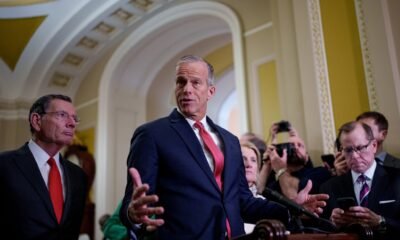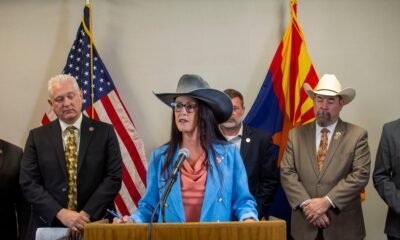Business
States Implement Medicaid Work Rules, Yet Job Assistance for Enrollees Remains Elusive

Eric Wunderlin, a 42-year-old man from Dayton, Ohio, faced significant health challenges that hindered his employment opportunities. His struggles with diabetes and depression forced him into low-paying, part-time retail jobs. At times, he had to choose between paying rent and buying food, but a pivotal change occurred in 2018 when his CareSource Medicaid health plan connected him with a life coach. This guidance enabled him to secure full-time work with benefits at a nonprofit organization. Now, he feels empowered, with plans for a European vacation.
Wunderlin’s experience stands in contrast to recent policy debates. Republican lawmakers in states like Ohio and Iowa advocate for work requirements for nondisabled adults on Medicaid, viewing mandates as a pathway to employment. They cite Wunderlin’s story as a potential model, suggesting that Medicaid can indeed facilitate job acquisition and reduce dependency on public assistance.
However, critics highlight the rarity of such situations. Most Medicaid recipients already hold jobs, and many may be removed from the program under strict work mandates. Data from KFF indicates that nearly two-thirds of enrollees are employed, while those who aren’t typically serve as caregivers, pursue education, or face health limitations. Ben Sommers, a healthcare economics professor at Harvard, asserts that evidence doesn’t support the belief in significant welfare freeloading.
As Congress considers reforms, the topic intensifies. The former Trump administration promoted Medicaid work mandates, several of which were overturned by courts for being unlawful. Experts argue that effective job placement requires investment in services like personalized coaching instead of punitive measures. Farah Khan of the Brookings Institution emphasizes that creating economic mobility necessitates supportive resources rather than punitive restrictions.
Currently, states like Georgia and Arkansas have instituted work requirements, but studies reveal mixed results. A study by Sommers noted no increases in employment from Arkansas’s mandates, with over 18,000 participants losing coverage before the policy was suspended. Additionally, awareness and understanding of these requirements remain problematic among enrollees.
In Montana, attempts to outsource job training programs resulted in diminishing participation, from 32,000 enrollees initially to just 11. Sarah Swanson from the state’s labor department acknowledges the challenges faced by contractors, focusing on attempts to revive job training opportunities.
Data transparency remains an issue across the board. The Ohio Department of Medicaid admits it doesn’t track job placement outcomes for Medicaid enrollees. However, CareSource, operating in multiple states, claims success through its JobConnect program, connecting individuals with coaches to improve their employability skills. Since 2023, approximately 800 participants have found jobs, and CareSource has directly hired 29 enrollees into various roles.
California has introduced nontraditional health benefits to assist vulnerable populations, helping nearly 280,000 enrollees find jobs. Similarly, UPMC Health Plan in Pennsylvania reports having hired over 10,000 Medicaid enrollees since 2021, transitioning many from low-wage roles to full-time positions with benefits.
The debate continues as various stakeholders call for a focus on enhancing the financial stability of Medicaid recipients rather than imposing restrictive work requirements. While the Biden administration has rolled back many of the previous mandates, advocates for experimentation argue that finding effective support systems remains essential.


















